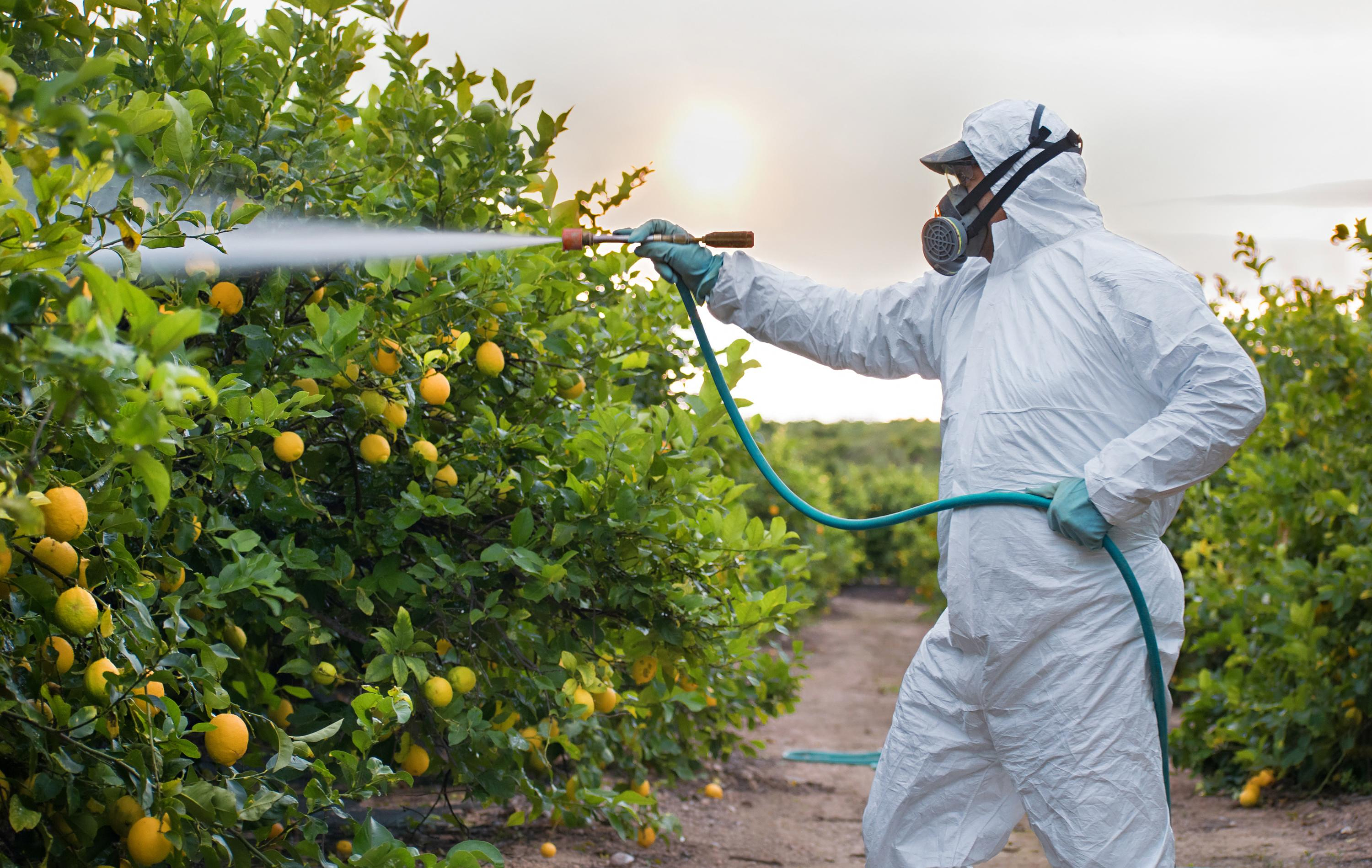PFOA in old stoves, fine particles in the atmosphere, UV from the sun, ... so many compounds in our environment that can influence our health. A large Franco-European study published in the International Journal of Hygiene and Environmental Health takes stock of 88 of these potentially harmful elements, grouped under the term exposome. Rémy Slama, research director at Inserm and one of the authors of this work, explains to Le Figaro the challenges of this subject.
LE FIGARO - What is the exposome, and why is it an important topic?
Rémy SLAMA. – The exposome designates all external factors possibly in contact with a human being. These factors can positively or negatively influence a human's development from conception to the end of life, just like our genes. At the same time, certain exposome factors can influence the genome, the set of genes of an individual. For example, ionizing radiation or benzene can induce breaks or mutations in DNA, other factors can influence the expression of our genes. And symmetrically, our genes influence our ability to live with environmental factors and possibly resist them.
What factors fall into this definition?
A priori, all chemical, physical, psychosocial, biological factors (such as infectious agents). Physical agents include UV radiation from sunlight which may be beneficial for making vitamin D but also increases the risk of skin cancer. PM 2.5 (atmospheric particles less than 2.5 micrometers in diameter) emitted by heat engines and other combustion processes are also part of our exposome. There are a lot of factors. We studied some in 88, for which there was often suspicion regarding their harmfulness.
Which of these 88 factors are the most dangerous?
We have classified the factors according to the number of childhood pathologies that they are likely to induce; this amounts to listing all the dangers associated with each factor. In the top quartet we find polychlorinated biphenyls (PCB), compounds banned since 1987 in France, which were found in a large number of applications (electricity, microwave ovens, adhesives, paints). Unfortunately, despite the ban, they persist in the environment, which explains why biomonitoring surveys find them in the body of the majority of the population. Hexachlorobenzene (HCB), banned in Europe since 1981, was used as a fungicide. Perfluorooctanoic acid (PFAO) banned in 2020 in Europe was notably found in the Teflon of frying pans.
What was your method for determining the danger of each factor in the exposome?
For each factor we studied the dangers it represents on the cardiovascular system, metabolism, neuronal development, respiratory system or the rest of the children's body. We relied on all the scientific literature, both human, animal and in vitro. Each factor of the exposome can induce several effects, for each of these effects we quantified its level of evidence in studies ranging from a “probable” to “very probable” effect. For example, PFOA can probably induce at least 7 different types of pathologies (respiratory, metabolic, neurodevelopmental, etc.), bisphenol A four. In our study, we established the level of evidence associated with the possible health effect of each factor: for example, the level of evidence was lower for an effect only observed in animals than for an effect found both in the animal and the human.
Why are more and more studies looking into this subject?
A large part of the population is exposed to numerous factors. With this study we make more visible a concern of all: how our way of living can influence our own health, such as the air we breathe, the food we eat or cosmetic products? We have understood, after significant research efforts, that the genome is far from explaining the occurrence of most cases of chronic diseases. And it is much easier to act on the environment than on our genes.
The impact of many products present in the environment, such as glyphosate, is the subject of controversy. How do you deal with this type of problem?
Scientists tend to be cautious and only consider a causal link established between a factor and a disease when there are repeated studies. We carried out a work of “synthesis of syntheses”, that is to say we relied on studies which had already synthesized individual studies on a given factor. The advantage is that our data has a high degree of reliability, the disadvantage is that we are probably missing less studied substances.
Why were you limited to 88 factors?
We do not have a magic machine to quickly assert that an exposome compound is dangerous or not. If we want to have an overall vision, we must put in place a long process. Research on this subject is more recent and much less financially supported than that on the genome. With more resources it would be possible to extend this work to more compounds and also to consider their effects at other ages of life, in adults.
Some speak of a cocktail effect, where the combination of several factors would have a negative impact much greater than the simple addition of the factors. Have you studied this effect?
We have not specifically dealt with the cocktail effect, that is to say the synergy which causes one substance to strongly potentiate the effect of another. However, the toxicological consensus is that this effect is not that common. On the other hand, there is an accumulation effect: the more an individual is subject to a high number of factors, the more the health risk increases.
Faced with the diversity of these compounds, what advice can you give us to preserve our health?
Pressure from consumers on companies and decision-makers could allow for more transparency. It is necessary that these dangerous substances are visible on the products we consume. Inspired by the label of current paints on “emissions of volatile organic compounds (VOC) in indoor air” between A and C, or the “Nutri-Score”, a “toxi-score” would be a signaling tool simple which deserves to be implemented. Some smartphone apps offer such scores for consumers but it would be relevant if there was an “official” one produced independently from research knowledge.
Does the law protect us from the exposome?
The law of January 26, 2016 to modernize our health system specifies that "the identification of these determinants [of population health, Editor's note] is based on the concept of exposome". Public Health France and ANSES have implemented this law with large biomonitoring studies which document the exposure of a large proportion of the population to numerous substances. But there is a lack of work to better understand the mechanisms of action, the health effects and risks, as well as ways to limit exposure. And the means to study these questions do not match the number of substances and possible effects. For two years, Inserm has proposed a vast and ambitious program on the exposome, consistent with the environmental health plan, but it has not yet been funded.
How will you continue your collective work?
We have so far drawn up a picture of the dangers linked to the exposome for children's health. The next step is to move on to “risk,” that is, a number of healthy years lost due to exposure to each of the factors studied. To do this, we are continuing our study by synthesizing the dose-response relationships for each compound in the exposome and the exposure data, which will allow us to estimate the number of years of healthy life lost.

 B:SM will break its investment record this year with 62 million euros
B:SM will break its investment record this year with 62 million euros War in Ukraine: when kyiv attacks Russia with inflatable balloons loaded with explosives
War in Ukraine: when kyiv attacks Russia with inflatable balloons loaded with explosives United States: divided on the question of presidential immunity, the Supreme Court offers respite to Trump
United States: divided on the question of presidential immunity, the Supreme Court offers respite to Trump Maurizio Molinari: “the Scurati affair, a European injury”
Maurizio Molinari: “the Scurati affair, a European injury” First three cases of “native” cholera confirmed in Mayotte
First three cases of “native” cholera confirmed in Mayotte Meningitis: compulsory vaccination for babies will be extended in 2025
Meningitis: compulsory vaccination for babies will be extended in 2025 Spain is the country in the European Union with the most overqualified workers for their jobs
Spain is the country in the European Union with the most overqualified workers for their jobs Parvovirus alert, the “fifth disease” of children which has already caused the death of five babies in 2024
Parvovirus alert, the “fifth disease” of children which has already caused the death of five babies in 2024 Inflation rebounds in March in the United States, a few days before the Fed meeting
Inflation rebounds in March in the United States, a few days before the Fed meeting Video games: Blizzard cancels Blizzcon 2024, its annual high mass
Video games: Blizzard cancels Blizzcon 2024, its annual high mass Falling wings of the Moulin Rouge: who will pay for the repairs?
Falling wings of the Moulin Rouge: who will pay for the repairs? “You don’t sell a company like that”: Roland Lescure “annoyed” by the prospect of a sale of Biogaran
“You don’t sell a company like that”: Roland Lescure “annoyed” by the prospect of a sale of Biogaran Exhibition: in Deauville, Zao Wou-Ki, beauty in all things
Exhibition: in Deauville, Zao Wou-Ki, beauty in all things Dak’art, the most important biennial of African art, postponed due to lack of funding
Dak’art, the most important biennial of African art, postponed due to lack of funding In Deadpool and Wolverine, Ryan and Hugh Jackman explore the depths of the Marvel multiverse
In Deadpool and Wolverine, Ryan and Hugh Jackman explore the depths of the Marvel multiverse Tom Cruise returns to Paris for the filming of Mission Impossible 8
Tom Cruise returns to Paris for the filming of Mission Impossible 8 Skoda Kodiaq 2024: a 'beast' plug-in hybrid SUV
Skoda Kodiaq 2024: a 'beast' plug-in hybrid SUV Tesla launches a new Model Y with 600 km of autonomy at a "more accessible price"
Tesla launches a new Model Y with 600 km of autonomy at a "more accessible price" The 10 best-selling cars in March 2024 in Spain: sales fall due to Easter
The 10 best-selling cars in March 2024 in Spain: sales fall due to Easter A private jet company buys more than 100 flying cars
A private jet company buys more than 100 flying cars This is how housing prices have changed in Spain in the last decade
This is how housing prices have changed in Spain in the last decade The home mortgage firm drops 10% in January and interest soars to 3.46%
The home mortgage firm drops 10% in January and interest soars to 3.46% The jewel of the Rocío de Nagüeles urbanization: a dream villa in Marbella
The jewel of the Rocío de Nagüeles urbanization: a dream villa in Marbella Rental prices grow by 7.3% in February: where does it go up and where does it go down?
Rental prices grow by 7.3% in February: where does it go up and where does it go down? Even on a mission for NATO, the Charles-de-Gaulle remains under French control, Lecornu responds to Mélenchon
Even on a mission for NATO, the Charles-de-Gaulle remains under French control, Lecornu responds to Mélenchon “Deadly Europe”, “economic decline”, immigration… What to remember from Emmanuel Macron’s speech at the Sorbonne
“Deadly Europe”, “economic decline”, immigration… What to remember from Emmanuel Macron’s speech at the Sorbonne Sale of Biogaran: The Republicans write to Emmanuel Macron
Sale of Biogaran: The Republicans write to Emmanuel Macron Europeans: “All those who claim that we don’t need Europe are liars”, criticizes Bayrou
Europeans: “All those who claim that we don’t need Europe are liars”, criticizes Bayrou These French cities that will boycott the World Cup in Qatar
These French cities that will boycott the World Cup in Qatar Euroleague: at the end of the suspense, Monaco equalizes against Fenerbahçe
Euroleague: at the end of the suspense, Monaco equalizes against Fenerbahçe Women's Six Nations: Where to see and five things to know about France-England
Women's Six Nations: Where to see and five things to know about France-England Liverpool: it is confirmed, Slot will succeed Klopp on the Reds bench
Liverpool: it is confirmed, Slot will succeed Klopp on the Reds bench Ligue 1: Montpellier and Nantes back to back, two reds in stoppage time
Ligue 1: Montpellier and Nantes back to back, two reds in stoppage time


















